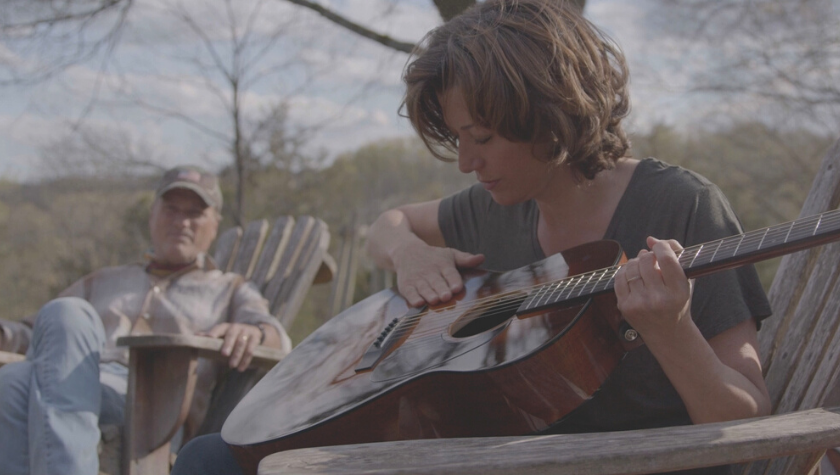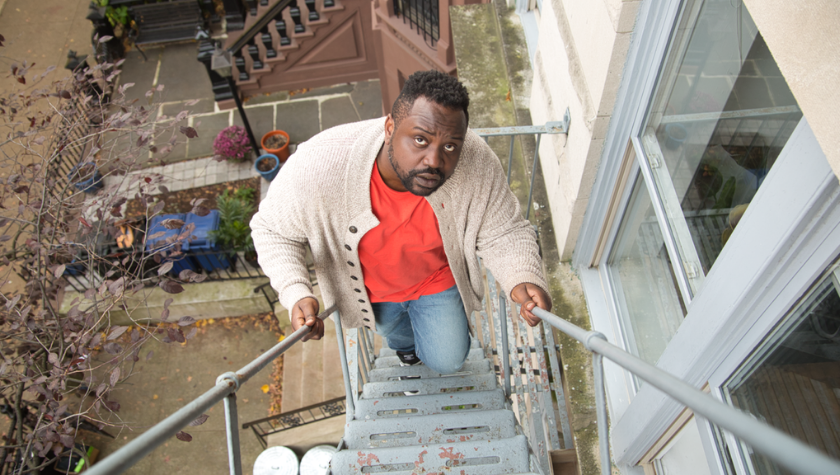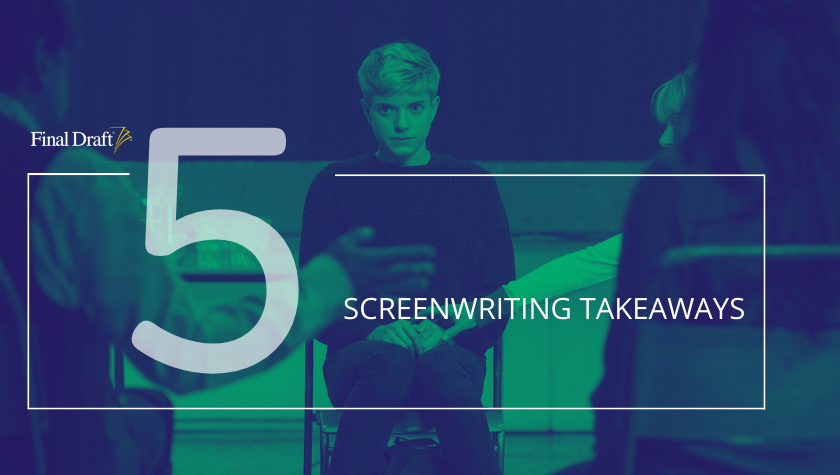‘I’m No Longer Here’ Is A Story that Finds Power in Identity and Cumbia Music
February 5, 2021
I’m No Longer Here is a visually rich story about the untold stories of the kids who live on the streets of Monterrey, Mexico. It’s also a very specific period piece about the height of the resurgence of Cumbia in the area. The movement had its peak in the earlier 20-teens — not to say the Cumbia craze won’t come back, particularly when people need to blow off steam after a worldwide pandemic.
The film is the labor of love of filmmaker Fernando Frías (perhaps best known for directing Los Espookys). Frías hails from Mexico City and virtually created his own Cumbia dance troupe in the process of making the film. Just as captivating as the stark and beautiful scenery is the film’s protagonist, Ulises (played by Daniel Garcia) — aptly named for the epic journey he takes throughout the film.
Ulises’ dancing and hair make him a standout among his Cumbia-worshipping, nonviolent gang of friends. They are happy as long as they can dance; and Ulises, of course, is the best dancer. This makes him somewhat of a celebrity in the town. Frías did a large search to find his perfect Ulises.
“I initially felt there was no other choice than working with kids from the neighborhoods we were representing in the film (and non-actors). But I was always a little nervous about how to find Ulises,” he said.
Frías saw all kinds of people, including survivors of the original Cumbia early movement from its peak in 2010 and 2011. After much searching, he stumbled upon Garcia playing with his family band when he visited a Cumbia club one night in Mexico.
“After we spotted him we asked if we could see him again and if he could bring some friends. He did and he was not selfish about it, and we just knew he was right.”
Eventually, Frías formed his own Cumbia gang for the film and stated the kids didn’t know each other when they first started working together.
“We had our own bubble and the creation of Los Terkos happened organically once the kids started hanging out together. Creating this group, it really was one of the most rewarding parts of the movie,” he said.
The name “Terkos” for the gang Frías created is apt. It means “stubborn, or resistant to change.” And the Terkos are indeed that; they want to keep old Cumbia alive and they love to listen to it “rebajada" — very slowed down. It’s like they are trying to hold onto a moment of peace and happiness in the midst of living in a time and place dominated by gang violence and poverty. With their gang of Terkos they feel safe and free — even if the idea of safety and freedom is an illusion, at least to them, the music remains real.
Frías states this metaphor for Cumbia was his original motivation to make the film: “The slowed down Cumbias do have a special meaning for me. I find that there is a metaphor when you listen to a song that is extremely slowed down — it’s as if they were trying to express this idea of not having time pass because of their circumstances. It’s as if they are trying to say, ‘I don’t want the music to stop because there is no future after this song.’ They really created an important counterculture in response to their circumstances and lack of opportunity.”
When Ulises is forced to go on the run after being falsely blamed for a gang confrontation gone horribly wrong, he finds himself in New York City, where his soundtrack dramatically changes. In the city, he feels people prefer hip-hop and twerking as opposed to the short steps that can be traced back to Cumbia’s African origins, where slaves defiantly danced, even in shackles.
This comes to a head when Ulises plays some Cumbia while hanging out with the men he does a hard day’s work with. The women they are with are excited to be reminded of home, but the other men, not so much.
“Ulises is a different kind of person than the Mexicans he is living with,” Frías said.
“Ulises knows what it means to be a part of something, and he wants to keep being a part of something. He can see what you lose … what the price is of assimilating. He desperately wants to reconnect with what he misses.”
In New York City, Ulises does find an unexpected ally. He meets young Lin on the roof of a store owned by Lin’s elderly Asian grandfather. Ulises does some handiwork for him, and when Ulises has nowhere else to go, Lin lets him stay in a small shelter on the roof. She is fascinated with Ulises' rebellious Cumbia haircut, and their inability to traditionally communicate. While these two have the shared experience of being immigrants not fitting in, Lin is already decidedly American, and for Ulises, his quest is clear; he must, in his eyes, ultimately return home.
This resolve perhaps presents itself most clearly when Ulises shears his own hair — his counterculture identity — while still living in New York. It’s a heartbreaking moment. This symbol of rebellion and identity is not fully accepted in Monterrey (where the cartel will tell you to get rid of your colorful plumage or pay the price) and not fully accepted on the streets of New York City. Ulises is living the life of so many immigrants — a life not fully visible, no matter how much your true personality is the complete contrary.
Frías closes the movie with a powerful question: What happens when the music stops? For Ulises, the answer is unclear. He’s made it home but his Los Terkos are now in disarray as they face the realities of growing up: pregnancy, death, to join a gang, to try to remain free? Frías himself says ultimately the making of I’m No Longer Here caused him even more to focus on the process over the end result.
“We cannot control the end result; but the process, it brings people together, and that’s the important part of doing this.”
Just like listening to a Cumbia rebajada, getting lost in the process or the music can remind us of our humanity, which feels like Ulises' ultimate message: If you are lost, hopefully you can still find a way to press play.
Written by: Lindsay Stidham
Lindsay holds an MFA in screenwriting from the American Film Institute. She has overseen two scripts from script to screen as a writer/ producer. SPOONER, starring Matthew Lillard (SLAMDANCE), and DOUCHEBAG (SUNDANCE) both released theatrically. Most recently Lindsay sold PLAY NICE starring Mary Lynn Rajskub. The series was distributed on Hulu. Recent directing endeavors include the Walla Walla premiering (and best screenplay nominated) TIL DEATH DO US PART, and the music video for Bible Belt’s Tomorrow All Today. Lindsay is currently working on an interactive romcom for the production company Effin' Funny, and a feature film script for Smarty Pants Pictures. Lindsay also currently works as an Adjunct Screenwriting Faculty member at USC’s School of Cinematic Arts. You can follow her work here: https://lindsaystidham.onfabrik.com/



